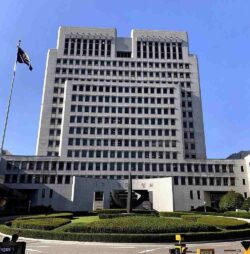13:33 JST, July 27, 2023
As the migration of Nepali youths to foreign lands hits all-time highs, the cash they are sending back home is also setting new records.
Nepal Rastra Bank says remittance inflows amounted to a staggering 1.11 trillion Nepalese rupees in the first 11 months of the fiscal year ended mid-June. The river of money represents a 22.7% increase year-on-year.
During the same 11-month period, Nepal issued labor permits to nearly 720,000 outbound youths, the central bank said.
Gunakar Bhatta, spokesperson for Nepal Rastra Bank, says the massive remittance inflow has mellowed ongoing liquidity constraints.
According to the Department of Foreign Employment, the number of Nepalis working abroad started to increase after 2000 when the Maoist insurgency that started in 1996 reached a peak.
In the fiscal year 2000-01, just over 55,000 Nepalis went abroad. With the country’s economy in tatters due to the bloody fighting, Nepali youths had no choice but to seek their fortunes in other lands.
In the last two decades, remittance inflows have swelled nearly 25-fold from 47 billion Nepalese rupees in 2000-01 to 1.11 trillion Nepalese rupees in the first 11 months of 2022-23.
Remittance is the lifeblood of Nepal’s economy and is associated with improved health and social indicators.
A survey conducted by Nepal Rastra Bank in 2014-15 in 16 districts comprising 320 households shows that 25.3% of the money received from migrant workers goes towards repayment of the loans taken by the households, 23.9% is spent on buying food, clothes and other daily essentials, 9.7% on education and health bills, 3.5% on marriage and other social occasions, and 3% on buying assets like land.
Similarly, 28% is put aside in savings and 1.1% is invested in businesses.
“The money sent home by Nepalis working abroad has played a crucial role in lifting people from poverty. It has increased the living standard of Nepalis,” said Bhatta.
Various studies have shown that a 10% increase in the share of remittances in a country’s GDP leads to a reduction of 1.6% of people living in poverty.
In Nepal, poverty dropped from 25.2% in 2010 to 16.6% in 2019, largely due to a rise in remittance earnings, the central bank study shows.
But there are negative aspects of remittance too.
“If young people keep moving out at this rate, it may severely hit consumption levels,” said Bhatta. “Similarly, in the coming years, Nepal may face a severe labor shortage.”
Experts say that if Nepal fails to develop appropriate policies to retain its youth in the coming years, the bulging youth population and labor force may even become a curse.
While Bangladesh is experiencing rapid demographic changes accompanied by age-structural transitions, it is also creating a window of opportunity for potential demographic dividends over the next three to four decades, according to a report.
Currently, about 45% of its population is below 24 years of age, and 70% is aged below 40.
In Nepal, the census showed that the country has a 62% working-age population, aged 15-59. As per international practice, the 15-64 age group is considered working age. The share of this age group is 65% of the total population in Nepal.
“Having such a large working-age population is considered a demographic window of opportunity. The theory is that the country can achieve rapid economic growth if we can mobilize this working-age population to boost production and accelerate nation-building,” Prof. Yogendra Gurung, head of the Central Department of Population Studies at Tribhuvan University, told the Post in a recent interview.
A country’s ability to achieve economic development by mobilizing its working-age population is called its demographic dividend.
“The government’s policy now should be to take advantage of this window of opportunity. The nation has to invest heavily in health and education. The goal should be to enhance the skills of the population of this age group,” said Gurung.
“Political uncertainty has led to massive brain drain,” said Jeevan Baniya, a labor expert. He estimates that the total labor permit issuance could reach 800,000 by the end of this fiscal year and the figure could keep rising each passing year.
“Due to political instability, corruption and low economic growth, there are no jobs in the country. Every young Nepali is concerned about attaining a better life,” he said.
In a new trend, hordes of Nepalis are now leaving for developed nations like Australia, the United States, the United Kingdom, Canada and Japan, and chances of their returning to Nepal are slim, experts say.
“Developed countries are facing labor shortages after COVID,” said Baniya.
“Remittance may boom in the future, but there are side effects too. Nepal may not be able to experience its demographic dividend in the years to come,” said Baniya.
The trend of students going abroad, apart from migrant workers, is more worrying. Universities in Nepal have reported a massive drop in student enrolment.
The central bank said that travel payments, or money spent to go abroad, increased 37.9% to 119.99 billion Nepalese rupees, including 89.18 billion Nepalese rupees for education, in the first 11 months of the current fiscal year.
In the labor segment, the increase was due to wage rises and strong labor markets in the Gulf Cooperation Council countries — Bahrain, Kuwait, Oman, Qatar, Saudi Arabia and the United Arab Emirates — and Malaysia.
Malaysia was the top labor destination receiving 247,780 Nepalis in one year, followed by Qatar (122,828), the UAE (105,005) and Saudi Arabia (104,749), according to the central bank.
According to the Department of Foreign Employment, in 1993-94, the total number of Nepalis leaving the country for jobs abroad was just 3,605 individuals.
At the height of the Maoist insurgency in 2000-01, the number rose to 55,000 and started swelling rapidly to reach 527,814 individuals in 2013-14.
Even after the end of the insurgency in 2006, Nepal’s economy was stuck in a low growth trap due to topsy-turvy politics, decade-long power cuts and natural calamities like earthquakes.
The low growth trap prompted thousands of Nepali youths to rush out to seek greener pastures abroad.
"World" POPULAR ARTICLE
-

8 Japanese Nationals Stranded on Indonesia’s Sumatra Island
-

Mozambican Cooking Class Held in Matsuyama, Ehime Pref.; Participants Don Aprons, Bandanas Made from Traditional Mozambique Fabric
-

U.S. Senate Resolution Backs Japan, Condemns China’s Pressure
-

China to Impose Sanctions on Shigeru Iwasaki, Former Head of Japan’s Self-Defense Forces, Who Serves as Adviser to Taiwan’s Executive Branch
-

South Korea’s Top Court Dismisses Nippon Steel Appeal in Lawsuit over Requisitioned Worker
JN ACCESS RANKING
-

Tokyo Economic Security Forum to Hold Inaugural Meeting Amid Tense Global Environment
-

Keidanren Chairman Yoshinobu Tsutsui Visits Kashiwazaki-Kariwa Nuclear Power Plant; Inspects New Emergency Safety System
-

Imports of Rare Earths from China Facing Delays, May Be Caused by Deterioration of Japan-China Relations
-

University of Tokyo Professor Discusses Japanese Economic Security in Interview Ahead of Forum
-

Japan Pulls out of Vietnam Nuclear Project, Complicating Hanoi’s Power Plans






















